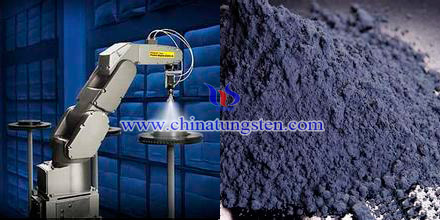Using High Velocity Oxyfuel Spraying to Produce Tungsten Carbide Based Coating
- Details
- Category: Tungsten Information
- Published on Tuesday, 12 January 2016 14:20
High velocity oxyfuel spraying (HVOF) rise in ordinary flame spraying of the early 1980s is a new type of thermal spray technology. HVOF flame spraying method because of its high speed, low temperature, high coating bond strength, compactness, high hardness, low porosity and low oxide content, is widely used in the aviation, metallurgy, textile machine, automobile, railways and other fields. With the latest statistics in 2015, in the thermal spray coating technology industry high velocity oxyfuel spraying occupies 25 percent of the market. In addition, HVOF technology has low flame temperature (about 2600 ~ 3000 ℃), high velocity flame, and during spraying process it can restrain and reduce tungsten carbide decomposition. Besides, tungsten carbide coating can be obtained and reservations tungsten carbide phase abrasion resistance, so the coating has good resistance to wear and corrosion resistance.
Using HVOF method to produce tungsten carbide based coating and the specific processes are as below: HVOF method is based on WC, Co, Cr and other raw materials, according to WC10Co4Cr ingredient preparation of raw materials. Prepared raw material by mixing milling, spray granulation and vacuum sintering to obtain a powder block, then by crushing and screening, control spray powder particle size to make the particle size reaches 15 ~ 45μm. After testing, 15 ~ 45μm spray powder has high spherical, good liquidity (~ 13 s / 50g), powder bulk density similar to (4.8 ~ 5.0 g / cm3), and single structure shows loose powder. Powder phase is WC and Co phase. The sample matrix material of coating is 45 # steel. Before spraying 45 # steel surface processed sand blasting by 50 to 70 mesh corundum blasting and using compressed air to purge the sample surface. Finally, use the robot fixed Praxair JP8000 supersonic flame spray gun to produce tungsten carbide based coating.

| Tungsten Supplier: Chinatungsten Online www.chinatungsten.com | Tel.: 86 592 5129696; Fax: 86 592 5129797;Email:sales@chinatungsten.com |
| Tungsten News & Prices, 3G Version: http://3g.chinatungsten.com | Molybdenum News & Molybdenum Price: http://news.molybdenum.com.cn |



 sales@chinatungsten.com
sales@chinatungsten.com